A recently completed study using relatively new eDNA technology shows that replacing culverts that might act as fish migration barriers is key to restoring salmon and steelhead in the Pacific Northwest. And, presumably, wherever faulty culverts interrupt salmonid migration. More broadly, however, the study is a herald for the use of eDNA science in restoration work conducted across environments and around the globe.
eDNA, or Environmental DNA, is defined by the U.S. Geological Survey as “nuclear or mitochondrial DNA that is released from an organism into the environment. Sources of eDNA include secreted feces, mucous, and gametes; shed skin and hair; and carcasses. eDNA can be detected in cellular or extracellular (dissolved DNA) form.”
The University of Washington and the National Oceanic and Atmospheric Administration (NOAA) teamed up to study the presence of salmon and trout eDNA both before and after two culvert replacement projects near Bellingham, Wash. The study took place over the lifespan of the projects, which ran from March 2021 to December 2022.
The construction projects are part of a 17-year, $3.8 billion effort required under a state law that mandates that old and out-of-date culverts which run under roadways be replaced by modern stream crossings. Improved structures include things like bottomless culverts and more sophisticated bridges which incorporate gentle grades and don’t become elevated, or “perched,” thus prohibiting fish migration.
According to the study, a new bridge that replaced a large and poorly functioning culvert did, indeed, find more salmon and trout eDNA above the former barrier once construction was complete. A second, smaller project garnered inconclusive data — the eDNA both above and below the smaller culvert remained about the same both before and after the project’s completion.
The results from the smaller replacement project are nebulous, and could indicate that the old culvert was actually functioning well or that the new culvert failed to produce a noticeable improvement on trout and salmon migration.
It’s no secret that culverts degrade over time. Older culverts were also constructed during a time when salmon and trout migration wasn’t a top-of-mind issue. Over the years, conservation interests began to pay more attention to culvert replacement projects that, while not exactly sexy in the grand environmental scheme of things, have had a significant positive impact on fish migration once the projects were complete.
Though it may stand to reason that removing obvious migration barriers, particularly on salmon streams, would have a positive outcome, but the UW/NOAA study and the eDNA technology that researchers used offers compelling, supporting evidence.
According to the study’s abstract, the presence (or lack) of salmon and trout eDNA was measured at regular intervals over the course of both construction projects. Researchers found “that one culvert in the treatment creek seemed to have no impact while the second culvert (a larger culvert that ran under Interstate Highway 5) had a large impact on fish passage,” the study reads. “The construction itself seemed to have only transient effects on salmonid species during the two construction events.”
The real take-away here, though, isn’t that replacing bad culverts with functional stream crossings works. Instead, it’s the technology used to gauge the positive impact.
“Our results suggest that culvert replacement can be conducted with only minimal impact of construction to key species of management concern,” the study reads. “Furthermore, eDNA methods can be an effective and efficient approach for monitoring hundreds of culverts to prioritize culverts that are required to be replaced.”
Researchers also noted that the science behind measuring the presence of eDNA in salmon- and trout-bearing streams likely has more and bigger applications in the future. Or, as the study reads, the science “is applicable in environments worldwide.”
Of the eDNA recorded in the stream where the larger, faulty culvert was replaced by a full-on bridge over the studied stream, researchers identified genetic material in the water from rainbow trout (possibly steelhead), coho salmon, sockeye salmon and cutthroat trout.
“This was an amazing study to work on, both in terms of the science and the broader implications. We demonstrated that we can measure the impact of management interventions using only DNA recovered from the water,” said lead author Elizabeth (Eily) Andruszkiewicz Allan, who began the project as a UW postdoctoral researcher in marine and environmental affairs and is now chief scientist at the UW-based eDNA Collaborative.
While the results aren’t exactly surprising — removal of fish barriers allows fish to access more habitat — the methods were quite novel. For instance, not a single fish was captured, tagged or counted. And, as far as Andruszkiewicz and her team know, the research didn’t harm a single fish. The presence of eDNA is all the team used in its monitoring efforts. The eDNA is simply bits and pieces of genetic material that occur in the environment — it’s found on everything from leaf litter and animal scat to fish scales.
“Environmental DNA offers a pretty different way of seeing the world,” said co-lead author Ryan Kelly, a UW professor of marine and environmental affairs. “We can see thousands of species in a liter of water, in a way that no other sampling method can. And what makes eDNA really attractive is it’s easily repeatable and scalable.”




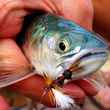
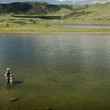

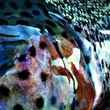



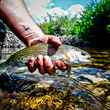
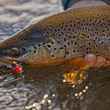








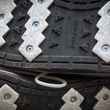
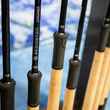



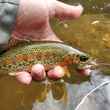



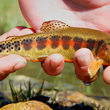
Comments
Robbins Church replied on Permalink
Thanks for this. It is a demonstration of the useful application of an important research technique that will have significant future use in understanding fisheries ecology and in managing diminishing resources. A nice study, well reported.
Pages